|
ROBOT CHASSIS CONSTRUCTION This robot tutorial should help you with the mechanical aspect of building your very first robot. You should have already read my build your first robot tutorial before moving on to this tutorial.
Design
When I first started building my first robot, someone much more experienced than me once said paraphrased, "if you build a mechanically crappy robot with expert programming and control, you will only get a crappy robot; build a mechanically professional robot with crappy programming and control, you will still get a well built robot." Its very good advice which I still use today. Planning. Would you say someone who plans his future will have a better future? YES! I cannot emphasize any more for you to design your robot out on paper (or computer) first. This means plan out everything, such as what material to build your robot out of<, where to put every screw, how you will attach your sensors - EVERYTHING. You will save money and time, and will have a better constructed robot too. To do this, you should draw all your parts out to dimension, mark your holes, and understand how all your parts connect. 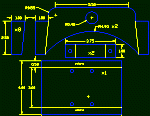 Use fewer and simpler parts! You will probably quickly realize that the fewer parts your robot has, and the simpler they are, the less you will have to design, make, and pay for. As you design your parts, always consider how you will actually manufacture these parts. Don't use unneccessary or over complicated features, or designs you do not have the tools to make or are really hard to make. Fewer and simpler parts also mean a smaller chance for mistakes in your design. K.I.S.S. Use off-the-shelf parts. When you purchase a part, it costs money. However there is a good chance that the off-the-shelf part is better than anything you can design and build yourself. Off-the-shelf parts are already well engineered, designed, and tested. This means there is less likely to go wrong on your robot, and less time and effort you need to spend to finish it. How much is your time worth? No point in spending 20 hours making a ghetto circuit when you could buy a high quality one for just $20. Ask yourself if the price of a part is greater or less than your willingness and ability to make the part yourself. Do not use more than 2 or 3 different screw types. There was a robot I once had to work on that another engineer built. He used a different screw type for every part! I had to use like 10 different unlabeled hex wrenches and 2 different screwdrivers to assembly/dissasemble it. Even worse, he had to purchase 10+ different boxes of screws! If you can make your entire robot out of only the very common 4-40 screws, you are on the right track. Frame
The frame of your robot is the basic structure to which you attach everything else. It is probably the largest part of your robot, so make sure it is made of a light weight rigid material such as aluminum or HDPE. I recommend reading those tutorials as well. Materials
If you are like how I was my first 3 years of building robots, you are probably super cheap and incredibly poor. Robot parts are expensive. Don't even pretend you can make a robot out of parts just lying around your house. Check out my tutorial on funding your robot. To summarize, expect to spend about $10-$50 per robot motor, about $20 on frame material, wheels about $8, and about $10 on miscellaneous nuts and bolts. You can try to search garbage bins and other old stuff for this, but you may or not be lucky. You might be able to find a few reasonable good motors, but it might be much harder to find two of the same motors. Just don't build a crappy robot because cereal box cordboard is the only material you can find! Mounting
When a beginner asks 'how do I attach my robot part?' what they are really asking is 'what is the best way to mount this part?'. Every part on a robot has a different method of mounting. This is due to obvious constraints such as placement, weight, size, function, etc. So I will go over each of the parts you may want to mount and tell you one or two of the best ways to do this. 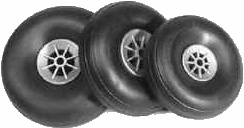
Wheel Basics
Wheel diameter. When buying (or making) your wheels you want to put your motor into consideration. For a start, there is torque and velocity. Large diameter wheels give your robot low torque but high velocity. So if you already have a very strong motor, then you can use wheels with larger diameters. Servo's already have good torque, so you should use larger diameter wheels. But if your motor is weak (such as if it does not have any gearing), you want to use a much smaller diameter wheel. This will make your robot slower, but at least it has enough torque to go up a hill! Another dumb mistake someone can make is buying a wheel that has a diameter close to or less than the motor diameter. For example, if you have a 1" diameter motor, and a 1.5" diameter wheel, you have a .25" ground clearance ( (1.5"-1")/2=.25" ). How high is the tallest object you want to go over? Wheel texture. The texture of your wheel is very terrain dependent. A common mistake for beginners is to ignore the texture of the wheel. If your wheel is too smooth then it will not have much friction. This is a serious issue with omni-wheels. An all plastic omni-wheel works poorly compared to an omni-wheel that uses rubber for the side wheels. Overly smooth robot wheels would likely skid while accelerating and braking. However a wheel that is really rough, such as a foam wheel, has higher friction with the ground leading to innefficiency. You also need to consider wear and tear on the wheel. Wheel width. You do not want it too wide as it causes increased resistance to rotating the wheel on a surface. I once used a 1" foam wheel on a concrete surface and it was very poor at rotating. 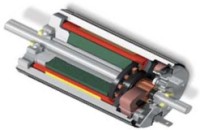 Wheel center hole diameter. This is where you would actually mount the output motor shaft to your motor. So you must know the length and diameter of your motor output shaft so that you may put this shaft into the hole of your motor. Mounting Your Robot Wheel Techniques
Jamming. Lets start with a basic wheel attached to a basic motor. If the wheel does not have a center hole, just drill one out slightly smaller than the diameter of the shaft of your motor. Make sure the hole is perfectly centered!!!! Then you can fill the hole with a little superglue, and finally press fit (jam, if you will) the motor shaft into the wheel. Perhaps use a little more superglue around the edges. Servo Wheel Mounting. Mounting a wheel onto a servo is fairly easy, and only requires a little drilling. When you purchase a servo, you also get a bunch of other little goodies with it. One of the items is called a servo horn. This is usually a black/red circular, X shaped, or I shaped plastic piece that attaches to the output shaft of the servo. So what you do is attach the wheel to this servo horn, then just screw the servo horn as designed into the servo. In the images below, I drilled two holes into my wheel, 2 holes into the servo horn (the red X thing), and screwed 2 screws into it to hold them together. Then I just attached the servo horn to my servo output shaft with a 3rd screw. This servo wheel mounting method, with slight modification, can work for other motors too. Just make your own custom 'servo horn' with a custom hole designed to fit your motor output shaft. Purchasing Wheels
The best robot wheels are actually hobby RC aircraft wheels. Strange, huh? Anyway, there is a huge variety of them online for you to choose from. Just go to any RC hobby website. For example, I have bought several wheels from this online RC hobby store.
Motors
There are huge varieties in motors. But for your robot I will assume you are using a basic DC motor. Make sure you get a motor which already has a gear box attached, as it makes your robot much better controlled, more efficient, and stronger. Designing your own gearing and/or chain systems can and will cause you headaches. My first attempt at it was a miserable failure . . . I recommend against trying it. Motor Mounting
To mount any type of motor to your chassis you will need to use an L shaped bracket. For a DC motor, all you need to do is take a sheet of aluminum, drill two holes in two of the corners, drill two more holes on the other half to match the motor screw holes, then bend the entire piece in a 90 degree angle. This particular image I had found a U shaped piece of aluminum in some bin, I cut it to size, and just drilled the appropriate holes to attach it to my white HDPE chassis. 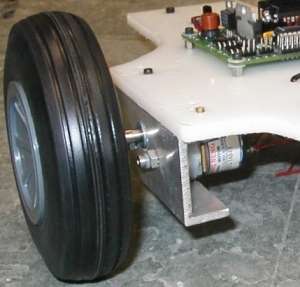
Servo Mounting
To mount your servo to your chassis, once again you will use the little baggie of goodies that came with the servo. You should have two black cube looking things with holes in it. There will be three holes in front and a single hole on the bottom. Your servo should also have four mounting holes, two on each side. Using screws, attach the front of the black things to each side of the servo. As shown in the image below, then attach your robot base with two more screws to the bottom hole of the black thingies. This particular robot used a thin reinforced sheet of aluminum as the base with two drilled holes for the mounting screws. 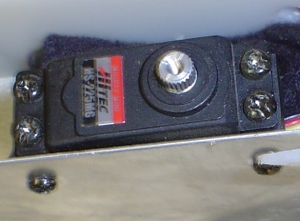 And the completed mounted servo and wheel configuration . . . 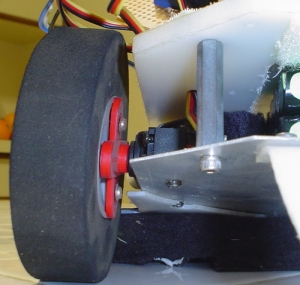
Mounting Robot Batteries
Mounting your batteries is very simple. As long as you are using an RC battery pack (such as NiCad or NiMH, you can simply mount your batteries to your robot using strips of velcro. This is the velcro that has a sticky tape side and a velcro side. The advantage to this mounting method is that you can easily swap out your batteries for freshly charged ones - great if you are in a robot competition. You can also group multiple batteries together using zip ties. This is an example of a velcro strip taped to a NiCad battery pack: 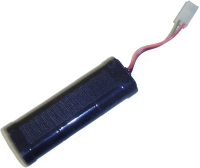
Electronics
Mounting your electronics to your robot can potentially be tricky. If you're lucky, your microcontroller has holes for screws or something other method of mounting. For this Cerebellum microcontroller (pictured below) I drilled holes into my HDPE robot base, then screwed short metal spacers into the HDPE. Then all I had to do is put my screws through the Cerebellum screw holes and screw them into the spacers. 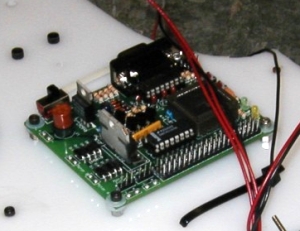 Things to keep in mind when mounting your electronics . . . Keep your electronics high up on your robot. It probably weighs little, so you want the heavier items using the space closer to the ground. You want to keep it out of splashing dirt too. Also keep in mind you probably want certain sensors and other sensitive electronics to stay away from your motors as electronic noise could cause interference. Lastly, plan out your wiring on your chassis - have routing holes drilled through your chassis beforehand, for example.
Mounting Sensors
Mounting sensors is very much a case-by-case basis. What makes mounting sensors difficult is that you are very limited on where you can place them onto your robot. They must be away from noisy motors, and probably at the front/sides of your robot. You must also keep them protected so that collisions and dirt wont damage your sensors too. If your robot is a line follower, you have to keep your sensors at an exact distance from the ground or risk bad data - even when the ground is uneven! If you are lucky, your sensor has screw holes in just the right place at just the right angle. But in my experience this is very unlikely. Unfortunately I have not yet mastered the art of mounting sensors (because of the huge variety of them), but I can go over a few tricks. So you must get creative, build a mount, use a little glue . . . you get the picture. Here (click to enlarge) you see a homemade aluminum mount for a sonar transducer and another mount on a servo for two Sharp IR Rangefinders. The sonar mount is aluminum bent at 90 degrees with a few screw holes drilled into it, and plastic spacers to prevent any shorting of the circuit board with the aluminum. The IR Rangefinder mount is aluminum with double sided sticky tape holding the sensors onto the aluminum plate. 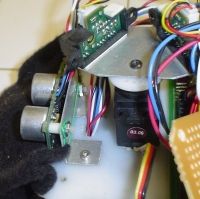
Hacking RC Car Frames (the cheating method)
Hacking a toy remote controlled car or tank is a great way to get a professionally built robot chassis with much less work. In this image (click to enlarge) I took a $10 car, hacked the motor wires, and attached all my electronics to it. When buying an RC vehicle, understand that you want a high quality motor so I suggest to avoid the cheap $10 toys. Get something nice if you are going to spend any money on your robot. Notice that you do not need a wireless car! Make sure that the car you will purchase uses a servo for it's rack-and-pinion steering, or you will have to place in your own. I placed my own servo into this cars' steering mechanism so it's definitely possible, but it took time/effort and wasn't perfect. The servo is the easiest way to do any steering system because it has position control. 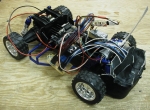 Robot Tank Treads
I have never actually built tank treads onto a robot before - mostly because I have been told, and I fully understand, how difficult this task can be. The best way to get treads for your robot is to get a motorized toy tank and hack it into a robot like you would for any RC car. In this robot I ripped off the top part of the tank, drilled screw holes into the plastic, and screwed on a flat sheet of HDPE. From there you can mount whatever you want onto the HDPE - electronics, sensor setups, etc. I also ripped out the guts and used the empty space inside to store my happy little NiMH battery. I built this robot in less than 5 hours (minus programming and testing). It's that easy!
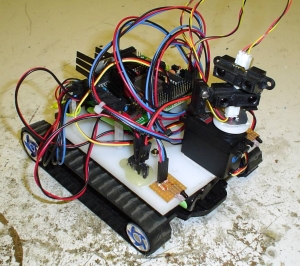 Sumber : Society Of Robots
Labels: Chassis, Mechanic, Robotic
|
